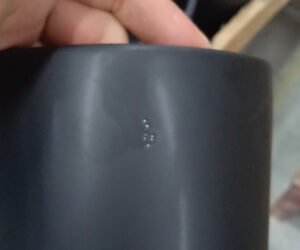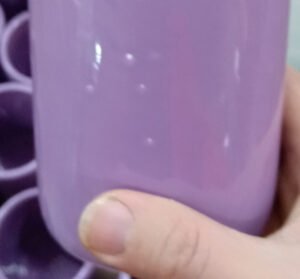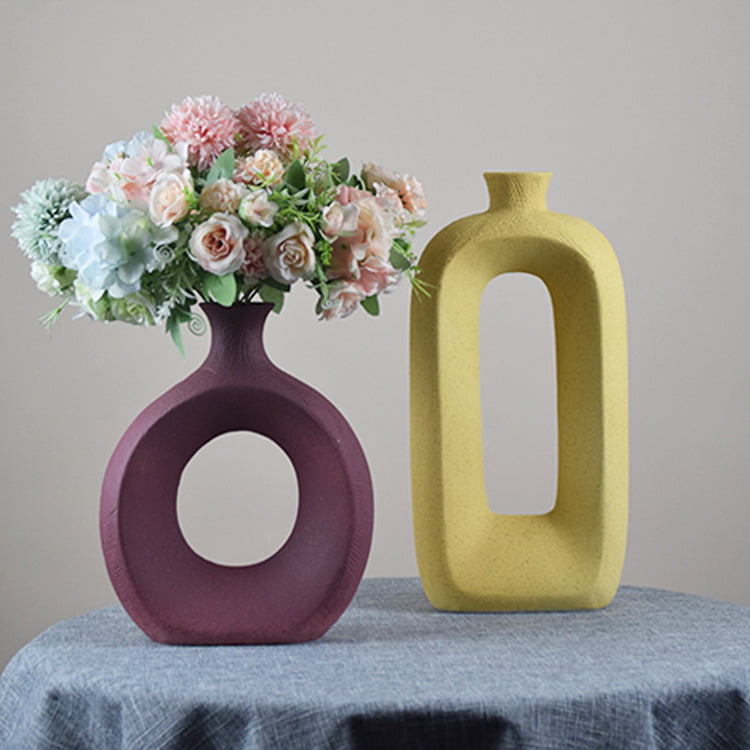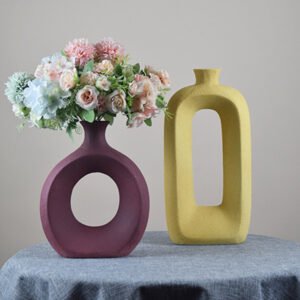Crawled glaze– In “crawling”, blank or bald spots appear on the glaze surface after firing. Crawling may be caused by having a dusty or dirty surface, or applying the glaze heavily. Skin oils from excessive handling of greenware may clog clay pores, causing the glaze to be repelled. Hard spots in the clay surface created by excessive sponging or polishing of the greenware is also a cause. To attempt to salvage such a piece, apply additional glaze to the bare spot and refire, or cover the entire piece with a textured glaze and refire.

Cratered or bubbled glaze– In this situation, the craters develop as a result of body gases erupting through the glaze and “freezing” as the kiln cools. This condition is caused by underfiring. To salvage such a piece, grind down the high spots, apply a thin coating of glaze and refire to a higher temperature.

Pinholes– Pinholes are tiny indention’s in the glaze surface which are generally no larger than the point of a pin. This fault may occur in almost any type of glaze and is caused by underfiring. To salvage a piece, refire at a higher temperature.



